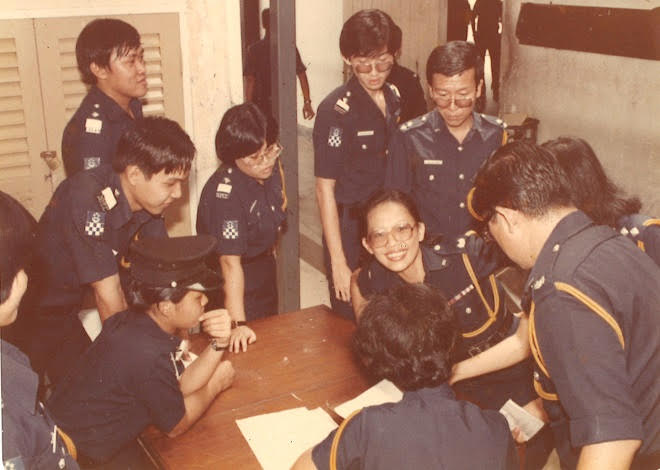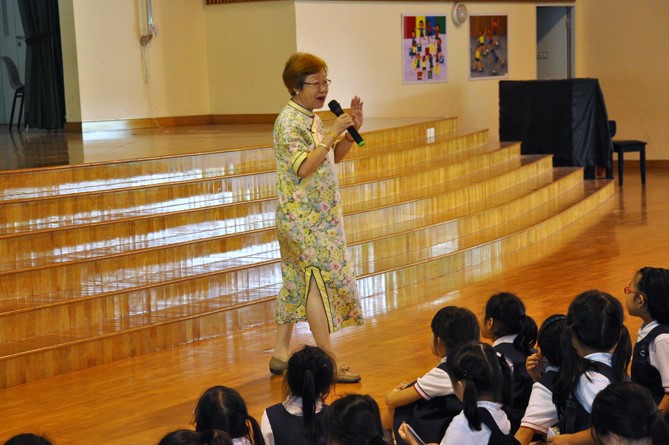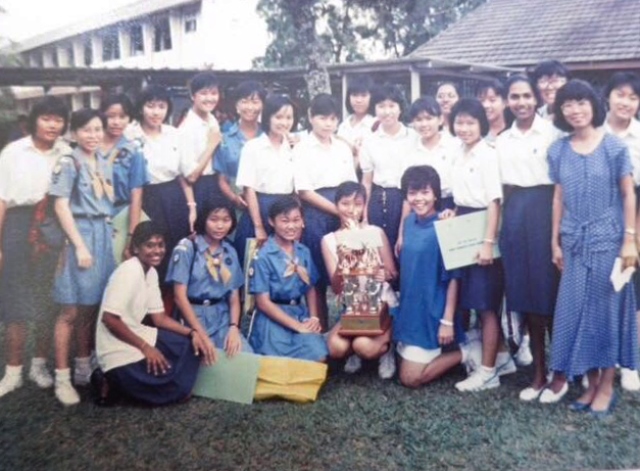It Takes a Village
18 Dec 2015


For teachers at kampong and island schools in the ’60s, who were entrusted with educating the children of fishermen and farmers, giving lessons meant functioning as both authority figures and friends to the youngsters in their classrooms.
In the days when Singapore’s 50-plus outlying islands supported thriving fisheries, teachers who were dispatched there to work at village schools used to make daily bumboat trips with bags in tow.
The islands’ schools, which were gradually shut down starting in the early ’80s due to dwindling enrolment, catered to the families of resident fishermen, most of them Malay. Populated islands included Pulau Bukom, Pulau Semakau, Pulau Sudong and Pulau Tekong. The latter actually had two Malay schools and one English school, as the island was also home to some Chinese families.
Mr Abdul Rahman bin Omar, 73, taught Malay for two years at Pulau Tekong in 1964 and 1965. He recalls how he used to get on his scooter and make his way to the Changi jetty by 7am. Here, he and about 20 other teachers would wait for the bumboat to take them to the island, after which Mr Abdul Rahman still needed to take a kampong taxi to the school. At 1pm when classes were dismissed, he had to do the trip in reverse. That was his daily routine.
“Sometimes on rainy days the sea got choppy and it became a bit scary,” Mr Abdul Rahman says. “But I don’t remember any accidents because the bumboat operators were very experienced. They didn’t travel in a straight line; they’d zig-zag for a smoother ride.”
Teaching on the island, Mr Abdul Rahman recalls, was akin to attending a two-year camp, full of warmth and adventure.
He taught at one of two Malay schools on Pulau Tekong, Kampong Pasir, which was located at the northern end of the island. The other Malay school, Kampong Selabin, faced Changi and was just a stone’s throw from the jetty.
“Sometimes I stayed at the kelong overnight,” says Mr Abdul Rahman, who like most of his island-teacher peers, was posted there for two-year stints.
His favourite memory is of enjoying the durians that would fall from the trees on the island. “There were many of these trees on Pulau Tekong and the durian season, which was about two to three times a year, was the best part! My students would say, eat them first and if they’re good then you buy!”
The warm relationship he enjoyed with his students and their parents on Pulau Tekong echoed his later experiences teaching at a school – Ayer Gemuruh Malay School – in the kampong where he lived. The kampong was located behind what is now Changi Prison. Mr Abdul Rahman taught at the school for 12 years in the ’60s and early ’70s.
“Most of the students were my friends,” he says. The school, a zinc-roofed building near the seaside, was within hollering distance of his home. About nine in 10 kampong residents were Malay.
“Most of the parents also knew me and they left everything to me. They trusted me to educate their children. It was like we were part of the same family,” he recalls. “They didn’t call me Cikgu (Malay for teacher), they called me Rahman!”
In fact, when Mr Abdul Rahman was moving into his Punggol flat years later, the sound of a neighbour’s voice stirred his memories.
When he saw the neighbour, he knew: “She was my student from Ayer Gemuruh! Yes, I could still recognise her voice! What a small world.”
A half century of teaching
In his 55-year career, Mr Abdul Rahman has taught Malay at 10 primary schools.
When he started teaching in 1960 at Siglap Primary School, the Government had just begun instituting Malay-medium secondary schools. The first was Sang Nila Utama Secondary School, which was founded in 1961 but had ceased operations by 1988.
As a teenager, before these schools came into being, Mr Abdul Rahman had nowhere to go after completing Primary 7. “Malays would have to go to an English school if they wanted to continue,” he says. “But as my father, who came from Johor, was part of the Malaysian army, I went to the Army College in Malaysia to further my studies.”
He returned to Singapore at age 17 to fulfil his childhood aspiration to teach. Mr Abdul Rahman developed such a passion for education that he remains a Malay language teacher to this day – now working at Montfort Junior School.
DIY classroom materials
Ask Mr Abdul Rahman to reflect on “Then and Now” and he says that in the days before teaching tools like computers, visualisers and even photocopiers, he and his colleagues had to do everything themselves. He wrote class notes on pieces of vanguard for the students to read. When it came to worksheets and tests, these were reproduced by typing onto carbon paper.
He also had to teach Geography and History in Malay – which the primary school students studied at the time as a single subject – without any textbooks or workbooks.
“During my time in school we didn’t study Geography and History. It was a new subject offered when I became a teacher in the ’60s and the problem was that we didn’t have any books! There were no materials in Malay at the time so I translated the books from English so that I could teach.”
Asked why he among all his colleagues had the translation burden, he explains, “I was teaching the subject so I had to do it. Luckily, I had help from my colleagues, some of whom were better in English.”
The children he teaches today are also markedly different from the kampong children he used to teach. “In those days, if you just stood there, stopped and looked at the children, folding your arms, the children would automatically stop what they were doing. These days, you have to shout sometimes.”
Passing the baton
The eldest of Mr Abdul Rahman’s four children, Mr Zuraimi bin Abdul Rahman, followed in his father’s footsteps and is currently the subject head of the Mathematics department at Victoria School.
Mr Abdul Rahman advised his son that as a teacher, he must always watch his words. “I was a very fierce teacher in my younger days! But I realised that as teachers we must be careful about what we say, and control our anger.”
He added, “To teach well, you must love the students. You must love your student as your brother or sister or child or grandchild. If you don’t have that [love], it’s better not to teach.”
For him, the mantra still resonates and his attachment is not only to his students but also his colleagues at Montfort Junior School, whose environment he can’t get enough of.
He says: “Even during the school holidays I’ll go back to school. If there’s nothing to do, I’ll just hang around for a while before coming home. I feel attached to the school and teaching. I’ll teach until MOE doesn’t want me!”



.jpg)

